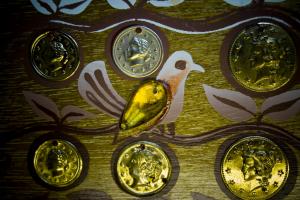Dividends and Dividend Yields
When I first started working in finance, I was overwhelmed by simple definitions. It took a lot of time, patience, and self-education to become comfortable with general finance terms. Even as I began to understand generalities, though, stock terms still intimidated me. Stocks took even more of an effort on my part to become comfortable with terms and ideas, so I'm glad to have the chance to share the benefit with you! Let’s continue our path toward stock term education by looking at “dividends” and “dividend yields”.
Dividends
Dividends are periodic payments made to shareholders, which are paid when a company makes a profit. Not all stock pay dividends, but companies which do pay dividends will share the profits above and beyond the share appreciation.
Dividend stock companies will assess their profits quarterly or annually to pay stockholders their percentage of the profits. This practice encourages stockholders to continue to hold stocks and encourages new investors to purchase shares. Of course, if the company is not profitable in a particular quarter, dividends will not be paid and the stockholder will be left with depreciated shares.
Many people choose to purchase dividend shares for income purposes. In the past, dividend shares also received tax breaks, however, the taxes for shares and dividends were equalized in 2009. Even without the tax breaks, dividend shares can be a good option for those investors searching for regular stock income.
Dividend Yields
Not all dividends are created equally. Let’s look at the idea behind higher paying dividends as calculated by dividend yields:
Dividend Yield = Annual Dividends per Share / Price per Share
This calculation can be used to determine the dividend yield -- the amount a company will pay in dividends as a percentage. Let's plug in some numbers:
If 123 Company and 456 Company were both paying dividends of $1 per share, the price per share will determine each dividend yield. Let’s say 123 Company’s price per share is $10, and 456 Company’s share price is $20. When we calculate each dividend yield, we can see 123 Company pays 10% while 456 Company pays 5%.
Of course, 123 Company is a better deal if both companies profit the same amount.
That little disclaimer up there makes it obvious that dividend yield cannot be the sole calculation in determining a company’s expected dividend payout. We should also look at the company’s historical returns, current company trends, and any insider info we may have before investing in any company. But dividend yield calculation is definitely a tool we want in our toolbox when we're trying to determine what stocks to purchase.
You can check out more basics on stocks in our Right Questions to Ask series!
- Login to post comments
-







MoneyCone wrote:
Fri, 12/10/2010 - 12:39 Comment #: 1Once again, you explain a concept that trips someone new to investing with such ease!
To add to this, remember each time you receive dividends, you have to pay taxes on it! So some companies allow you to receive shares instead of dividends (taxes are differed in this case, you own taxes only when you sell).
Christa Palm wrote:
Fri, 12/10/2010 - 17:13 Comment #: 2MoneyCone, thanks for the clarification -- excellent point!
Todd wrote:
Sat, 12/11/2010 - 01:54 Comment #: 3In these hectic times, dividend yield is one of the most reliable ways to find companies that have REAL earnings and aren't just trying to inflate their stock prices.
Aloysa wrote:
Sun, 12/12/2010 - 03:32 Comment #: 4I work with investment bankers a lot, and sometimes when they go on and on with their "finance" talk even my graduate degree doesn't help me to figure out what they are talking about. LOL They need some lessons from you!
Working on Weekends and Getting Ready for a Vacation Reading wrote:
Sun, 12/12/2010 - 13:28 Comment #: 5[...] Dividend and Dividend Yields posted at MomVesting – a clear explanation of the dividend and dividend yields.” Many people choose to purchase dividend shares for income purposes. In the past, dividend shares also received tax breaks, however, the taxes for shares and dividends were equalized in 2009.” [...]
Christa Palm wrote:
Thu, 12/16/2010 - 18:55 Comment #: 6Todd, great point --dividend yield stocks often go hand in hand with real earnings companies!
Aloysa, thanks for the compliment! I agree bankers can get caught up in tossing around acronyms and banking terms!
Weekend Reading 12/18/2010 — Dividend Monk wrote:
Sat, 12/18/2010 - 15:49 Comment #: 7[...] Dividends and Dividend Yields Momvesting provided a great article on the basic definitions for dividends. They’ve also got high quality articles on a variety of other subjects this week. [...]
Weekly Financial Planning and Investment from Personal Finan wrote:
Sun, 01/16/2011 - 04:42 Comment #: 8[...] presents Dividends and Dividend Yields | MomVesting posted at MomVesting, saying, “Let’s continue our path toward stock term education by [...]
Festival of Stocks | Frankly Speaking wrote:
Wed, 10/26/2011 - 07:11 Comment #: 9[...] presents Dividends and Dividend Yields | MomVesting posted at [...]
Financial Definitions - Glossary for Understanding Finances wrote:
Thu, 01/19/2012 - 21:46 Comment #: 10[...] See Also: Adjusted Current Ratio D Diversification Dividend and Dividend Yields [...]